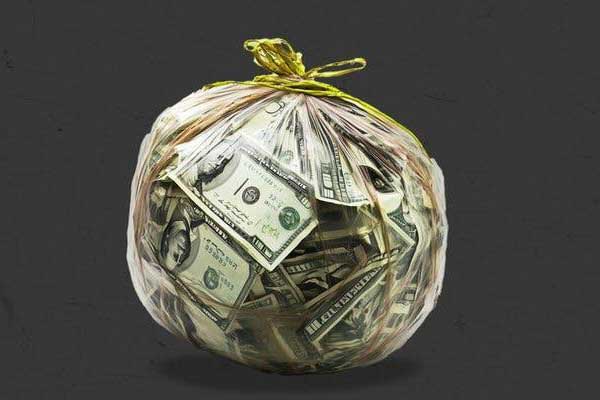Where to invest a year-end stash of cash
Three investing pros have tipped their hands on where they see the best opportunities now. So Carl Hazeley's weighed up each one.
1st November 2024 12:06
Carl Hazeley from Finimize

- SoFi recommends a relatively defensive strategy of putting half your cash hoard in short-term government bonds and half in dividend-paying stocks, angling to benefit no matter what happens to the US economy.
- BlackRock sees gold as attractive now, but only as a 5% position. With central banks buying it up and government debts rising ever higher, its value should continue to rise.
- Causeway Capital Management fancies industrial chipmakers since they’ve got solid fundamentals but have been overlooked by investors chasing the AI boom.
The holiday season is around the corner, and if you’re high up on Santa’s nice list, you might find yourself in for a seasonal bonus. And sure, you might want to use that money to spoil yourself today, but there’s the possibility of an even bigger treat tomorrow (figuratively speaking) if you invest it. So here are three ideas three experts shared with Bloomberg that you might want to consider.
Idea 1: short-term bonds and dividend-paying stocks
The head of investment strategy at SoFi recommends putting half that cash into dividend-paying US stocks and half into short-term government bonds. They’re betting that the Federal Reserve (Fed) will end up cutting US interest rates by more than investors are anticipating, which will bring down short-term bond yields while boosting their prices.
If the Fed does that, the economy should hold up pretty well, so hanging onto some stocks should prove fruitful too. The focus on dividend-paying shares is all about to valuation: the S&P 500’s dividend yield is around 1.3%, while there are baskets of dividend-paying stocks offering much higher potential yields.
My two cents.
While this feels like a relatively defensive move, it’s hard to argue with the logic. A lot of investors have declared victory in achieving a recession-averting “soft landing”, and this strategy at least helps you keep a foot in either camp if things don’t quite go as smoothly as hoped.
Idea 2: gold
A portfolio manager for BlackRock’s Global Allocation Fund sees a modest allocation of gold – between 2% and 5% – as the right move to make. It was an inconsistent hedge against inflation in 2021 and 2022, sure, but it has made up for that in the past year, becoming one of the market’s best-performing assets. This year, gold has been boosted by moves in the US dollar and interest rates. And looking ahead, its “reliable store of value” characteristics should come to the fore: central banks keep buying it up, along with investors who are worried about governments racking up huge, arguably unsustainable, debts.
My two cents.
While I can’t fault the argument for having a small amount of gold in your long-term portfolio, the idea isn’t exactly thrilling. It’s a zero-yielding asset, and if I’m looking for safety, other assets offer some intrinsic return. Plus, with the price of an ounce of the yellow metal already having rallied to all-time highs, it’s tough to be convinced that there’ll be lots more potential upside soon. That doesn’t mean it can’t happen, though.
Idea 3: chipmakers (not the ones you’re thinking)
This isn’t an AI play. Shares of AI-focused chipmakers have gone to the moon, leaving their industrial- and automotive-focused peers firmly on the ground. But according to the CEO of Causeway Capital Management, it’s about time for a cyclical rebound. The firm sees a likely recovery in orders next year in robotics, manufacturing, and automation, plus rising demand for data centers – all of which rely on industrial semiconductors. What’s more, the companies that make those chips generate strong cash flow and have modest amounts of leverage, making them a compelling investment.
My two cents.
This is more my speed: I like the idea of under-appreciated, underestimated stocks that already have solid cash flow dynamics. And there are a lot of sub-sectors likely to drive growth, so I’m probably not relying on a single end-market or geography to make this play out. On the downside, there are no ETFs that give me the kind of direct exposure I’d like, which might mean it’s worth doing the extra work to identify the individual companies that are set to benefit.
Carl Hazeley is an analyst at Finimize.
ii and finimize are both part of abrdn.
finimize is a newsletter, app and community providing investing insights for individual investors.
abrdn is a global investment company that helps customers plan, save and invest for their future.
These articles are provided for information purposes only. Occasionally, an opinion about whether to buy or sell a specific investment may be provided by third parties. The content is not intended to be a personal recommendation to buy or sell any financial instrument or product, or to adopt any investment strategy as it is not provided based on an assessment of your investing knowledge and experience, your financial situation or your investment objectives. The value of your investments, and the income derived from them, may go down as well as up. You may not get back all the money that you invest. The investments referred to in this article may not be suitable for all investors, and if in doubt, an investor should seek advice from a qualified investment adviser.
Full performance can be found on the company or index summary page on the interactive investor website. Simply click on the company's or index name highlighted in the article.
Editor's Picks